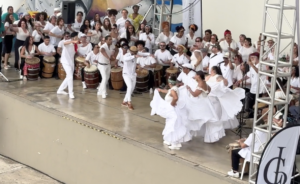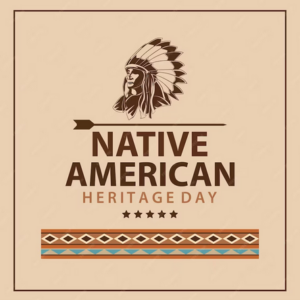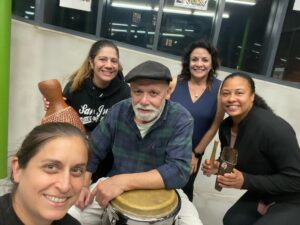by Nicole Wines
 Almost a year and a half ago, I discovered a little jewel of information that completely changed my life. About to go on a camping trip in Jenny Jump State Forest in the northwestern mountains of New Jersey, a colleague mentioned that I should stop by “Ballou’s” spring house for some clean, refreshing mountain spring water, piped out of the mountain at the side of the road. He told me how to find it, and to make sure to take extra bottles with me, as just taking a taste couldn’t possibly be enough. I brought a few gallon jugs and filled them up, making it my main source of drinking water for the next couple of days.
Almost a year and a half ago, I discovered a little jewel of information that completely changed my life. About to go on a camping trip in Jenny Jump State Forest in the northwestern mountains of New Jersey, a colleague mentioned that I should stop by “Ballou’s” spring house for some clean, refreshing mountain spring water, piped out of the mountain at the side of the road. He told me how to find it, and to make sure to take extra bottles with me, as just taking a taste couldn’t possibly be enough. I brought a few gallon jugs and filled them up, making it my main source of drinking water for the next couple of days.
 Two days after I started drinking that water, I woke up in the morning feeling like a completely different person than I had for over two years before that trip. I found myself suddenly cured of a nausea and heavy feeling that had hung over me for years. My doctor hadn’t been able to figure out what it was, and I just had to learn to live with it. But suddenly it was gone. And when the spring water ran out and I started drinking my filtered municipal tap water, suddenly it was back.
Two days after I started drinking that water, I woke up in the morning feeling like a completely different person than I had for over two years before that trip. I found myself suddenly cured of a nausea and heavy feeling that had hung over me for years. My doctor hadn’t been able to figure out what it was, and I just had to learn to live with it. But suddenly it was gone. And when the spring water ran out and I started drinking my filtered municipal tap water, suddenly it was back.  Having lived without that feeling for a couple of days, I couldn’t accept being sick again, so I did what any normal person would do. I took a trip to the home brewers supply shop and bought myself a bunch of 5-gallon glass carboys, drove the 75 miles to the spring and filled them up with my new source of drinking and cooking water.
Having lived without that feeling for a couple of days, I couldn’t accept being sick again, so I did what any normal person would do. I took a trip to the home brewers supply shop and bought myself a bunch of 5-gallon glass carboys, drove the 75 miles to the spring and filled them up with my new source of drinking and cooking water.
 For me and my co-director at Raíces, it is worth the trip, every 6-8 weeks, to fill up on this precious gift of life, and it is the only way we know how to provide ourselves and our families with clean water. I can’t trust the tap water in my town, I don’t own a home so I can’t dig a well or make a solar still. It’s our own source of clean water, and we have met others at the spring house who come from even further away because they can’t drink their local water either (once we met a family that drives over two hours from their contaminated, fracked land in PA because it’s the closest clean water they can find).
For me and my co-director at Raíces, it is worth the trip, every 6-8 weeks, to fill up on this precious gift of life, and it is the only way we know how to provide ourselves and our families with clean water. I can’t trust the tap water in my town, I don’t own a home so I can’t dig a well or make a solar still. It’s our own source of clean water, and we have met others at the spring house who come from even further away because they can’t drink their local water either (once we met a family that drives over two hours from their contaminated, fracked land in PA because it’s the closest clean water they can find).
I was happy to not be sick, but still, something didn’t sit right with me about having to get in my fossil fuel burning car and spend a full morning or afternoon to pick up water, a resource I should be able to access or source locally. I would encourage anyone who doesn’t have their own clean water well to find a local spring, if there are any nearby that are tested and uncontaminated. I wanted to find something closer to home, but it seemed that anywhere I looked for clean water close to home left me with a dead end, or a “drink at your own risk” sign.
As I searched for clean water, I learned the extent of contamination in my region, in so many parts of my state…it made it hard to comprehend why we can’t get our acts together enough to protect the most basic sources of life for ourselves and our community. I learned that my town’s (and most of my county’s) drinking water came primarily from surface water of the Delaware and Raritan Canal. I learned about the American Cyanamid Superfund site only a few miles upstream that was leaching benzene, arsenic, and other contaminants into the Raritan River on a daily basis and mingling waters with the river during floods. I learned about the 3+ years of falsified water quality reports filed by the city of New Brunswick, just across the river, where I used to live and drink water (these false reports were covering up water quality violations at the same intake point as my current town gets the majority of their water from). I learned to read water quality reports for which contaminants were missing from the tests and reports, I learned that although the cleanup of that Superfund site seems to be underway, there isn’t too much information available on current contaminant levels. I also learned that not too  many people know about these problems or even think to question where their water comes from. I came up with more questions than I could find answers. I stopped wanting to find clean water locally because it seemed impossible, and just became grateful that I had a source of fresh water that doesn’t make me go through my day feeling ill.
many people know about these problems or even think to question where their water comes from. I came up with more questions than I could find answers. I stopped wanting to find clean water locally because it seemed impossible, and just became grateful that I had a source of fresh water that doesn’t make me go through my day feeling ill.
As I write this post, about a half a mile from where I sit, there is a ruptured gas main under the surface of the Raritan River. It’s no longer spewing natural gas into the river and the fumes are no longer blanketing my town. The valve has been dug out from under the snow and shut off, and repairs are underway. Our public utility assures us that there are no health or environmental threats associated with this break and the state’s Department of Environmental Protection is staying silent due to the lack of risk associated with a spill like this. But now articles are surfacing from months ago about residents alerting the utility to the leak, people saying that they had seen and reported oddly churning water above the gas line for at least a year prior to today’s eruption, which resulted in two geysers of natural gas and water to rise up out of the river:
I’m sure we won’t get any real answers as to how long this natural gas has been leaking into the river and most likely, no one will ever tell us how much gas leaked today…and over the past year or so, or how much benzene and arsenic, if any, continue to leach into the river from the Superfund site upstream, or what exactly makes up the high levels of inorganics and pathogens being found in the uptake of our municipal water. With so many reports from around the country of contaminated drinking water due to chemical spills and natural gas fracking, it’s almost becoming the norm. Over the past few months over 300,000 residents of West Virginia have had their water contaminated by chemical spills.
So many people in our country and world live in a state of water safety crisis. It seems to be the direction we are heading, but if more of us take matters into our own hands, maybe we can change the course. Obviously, in the long term, the best solution is to develop clean and sustainable sources of energy, supplies and goods, we have a long way to go, and there are steps you can take to help protect your local environment and especially our most precious gift of life, fresh water.
In my community we have learned the hard way that we can’t trust our local waterways to be clean, we can’t trust the companies along the waterways to help keep them clean, we can’t trust our public works departments to report honestly about the quality of our water, we can’t trust our public utilities to keep the infrastructure up to date and in repair. I thought it couldn’t get worse than it was, until today’s spill. It hit home and it hit hard. It isn’t just about our drinking water, it’s also about our home planet, our environment and the communities that we live in. It’s pretty obvious that we have to take responsibility for our own health and the health of the water and the environment in our own communities. Some of you reading this are lucky enough to have your own clean sources of water or live in towns with clean municipal water, but unless you have done the research, you’ll never know for sure.
WHAT YOU CAN DO ABOUT IT
Here are some beginning steps and actions you can take, feel free to leave comments with more ideas:
- Research where your water comes from and monitor municipal and private company water quality reports.
- If you suspect that your drinking water is not clean or decide you don’t want to drink treated water, find a local spring and make sure that it gets tested regularly.
- Take steps to address contamination and cleanup in your own communities.
- Do not allow companies to contaminate our water and lands, don’t support companies that are known to pollute.
- Demanding accountability of our public utilities, participate in searching for solutions to upgrading infrastructures sustainably on a local level.
- Participate in watershed cleanups.
- Educate yourself on your local and regional environment and ecology, take action to protect it.
- Speak up, learn and share information, document, write, get out in your community.
- Test your own water quality.
- Get active with your local environmental commission, watershed association, sustainability group, or make your own group in your community. Ask them to support independent monitoring and testing of drinking and surface water.
- Be an example, inspire others to act!
- *Submitted by a reader, thanks Judi!: Stop flushing expired or unwanted prescription or over the counter medications down the toilet/drain. Water soluble medications aren’t easily removed from the water supply.
MORE RESOURCES AND INFORMATION
- Find a Spring-Spring Water Directory (not comprehensive, but a start!)
- US EPA on American Cyanamid Site, Raritan River, Bound Brook, NJ
- US EPA American Cyanamid Remediation Plan
- About this Toxic Nightmare: Toxic Flooding in New Jersey
- Gasland
- How to Tell if Your Water is Safe



